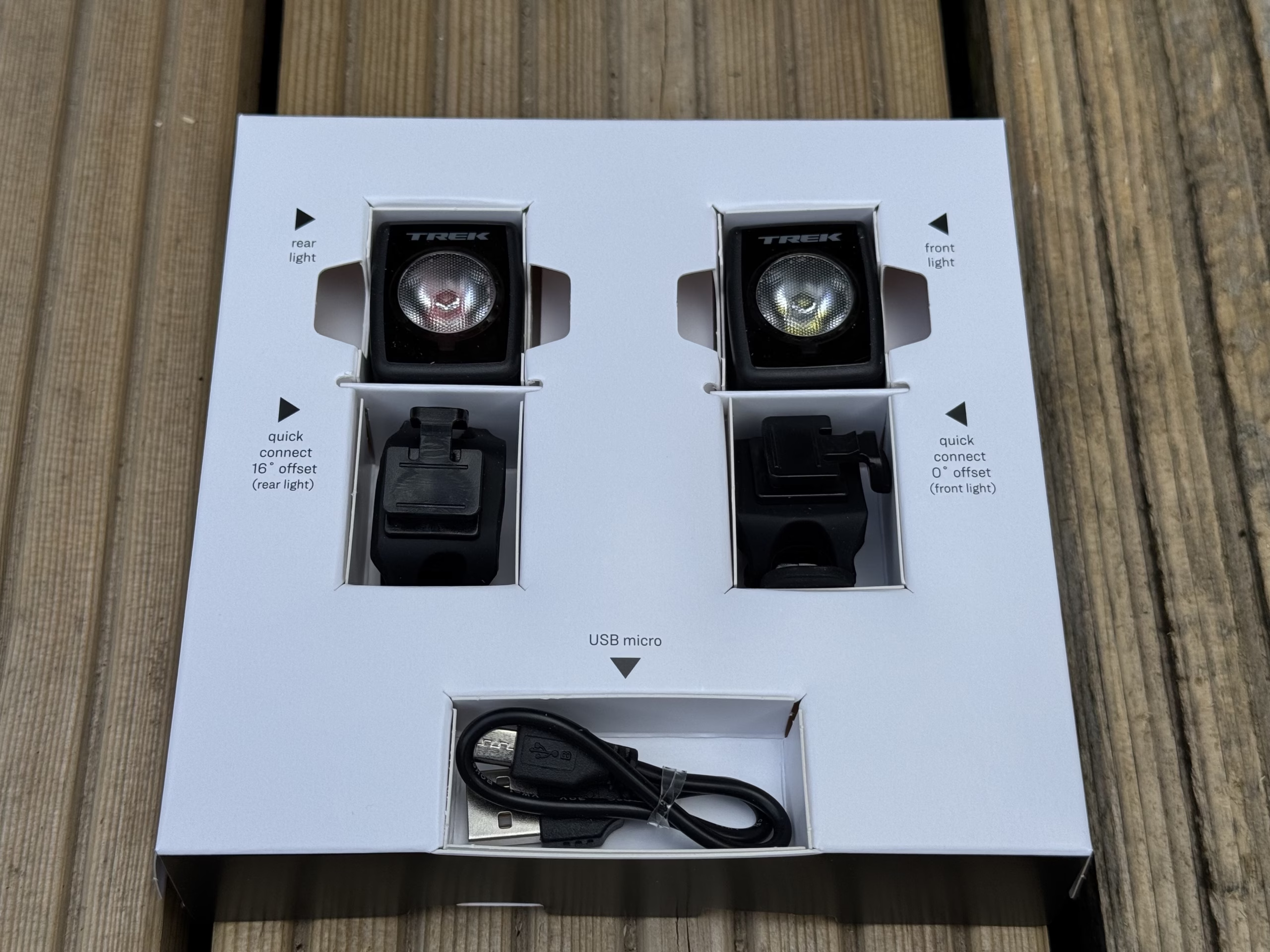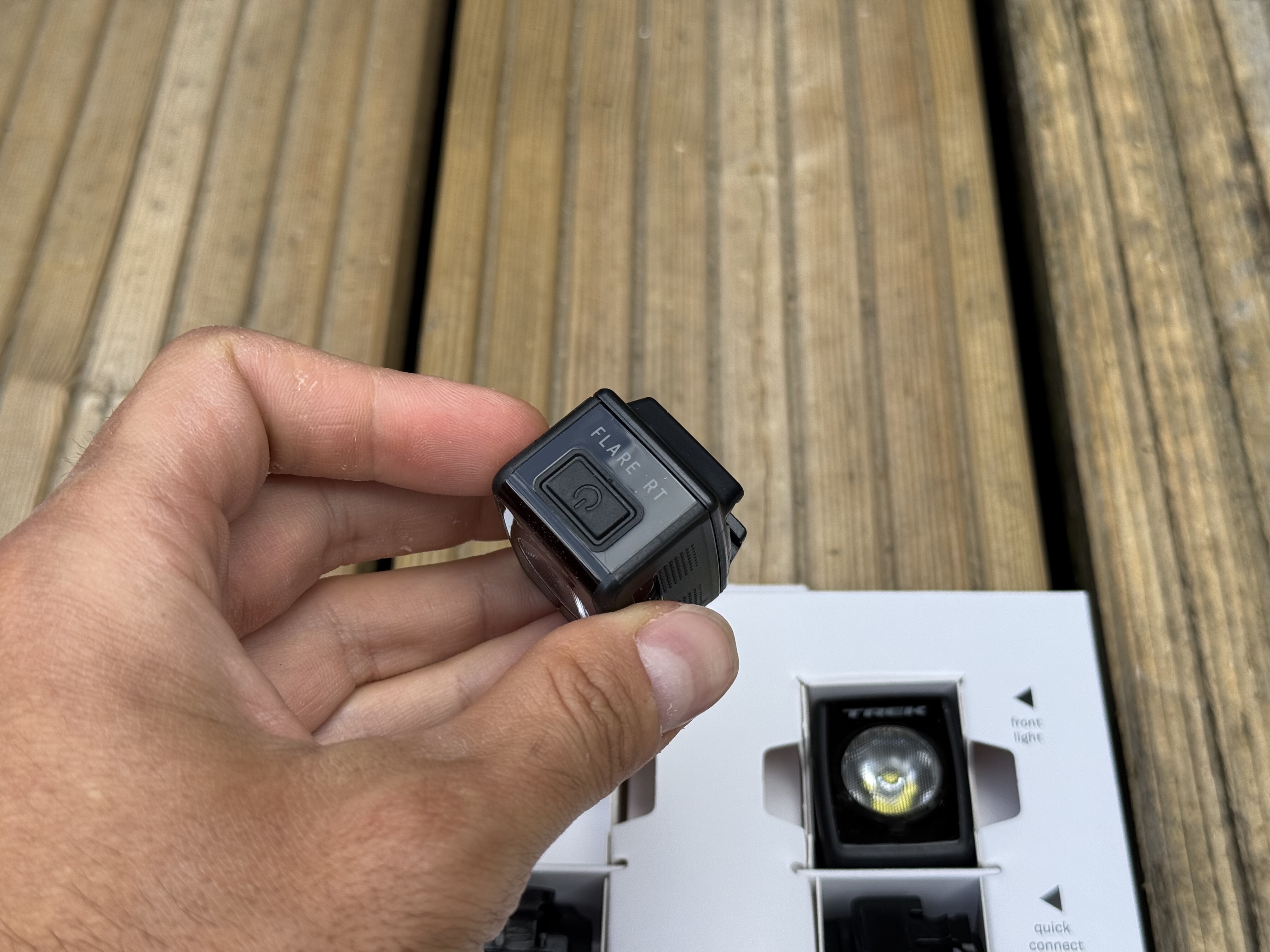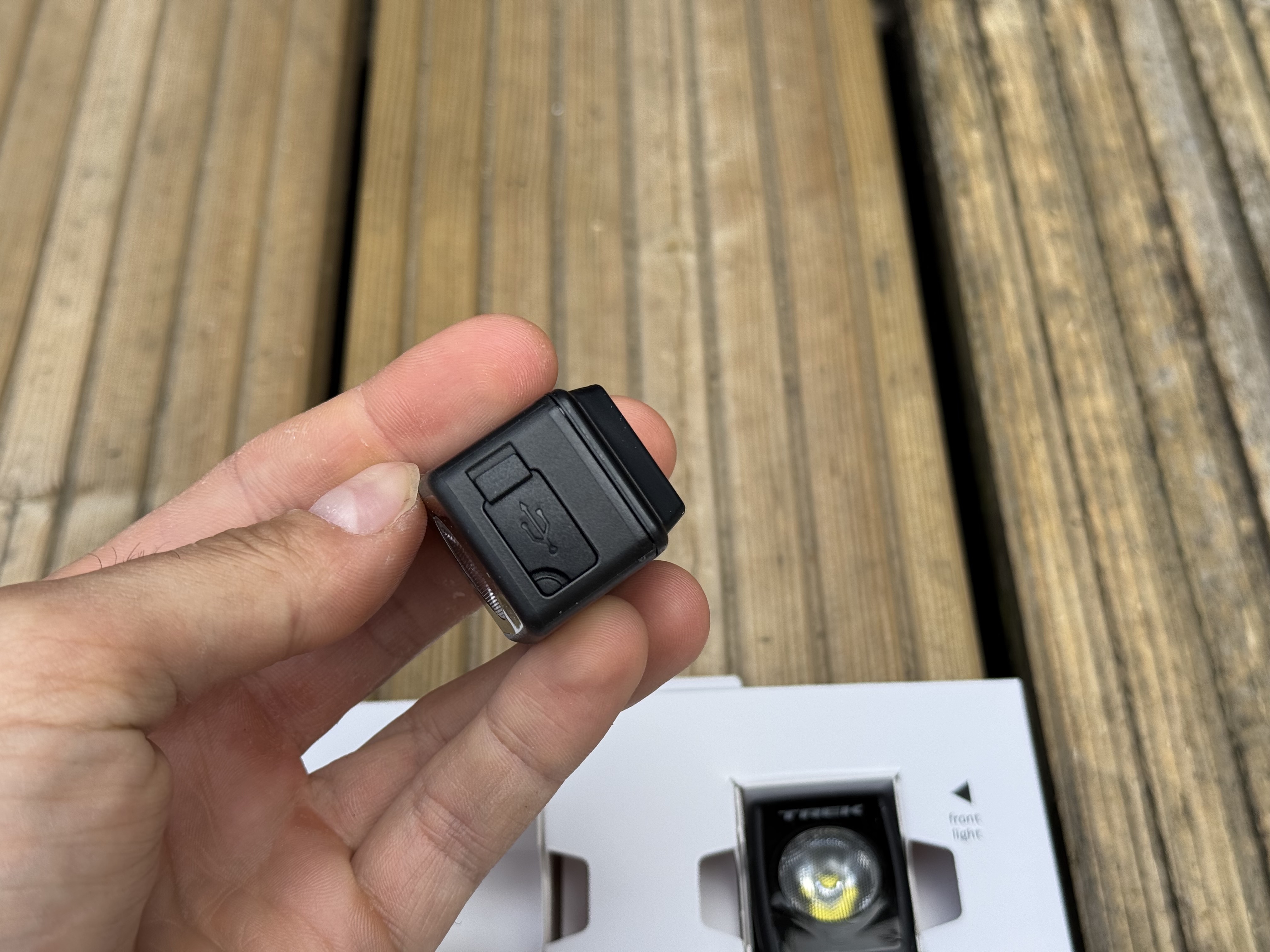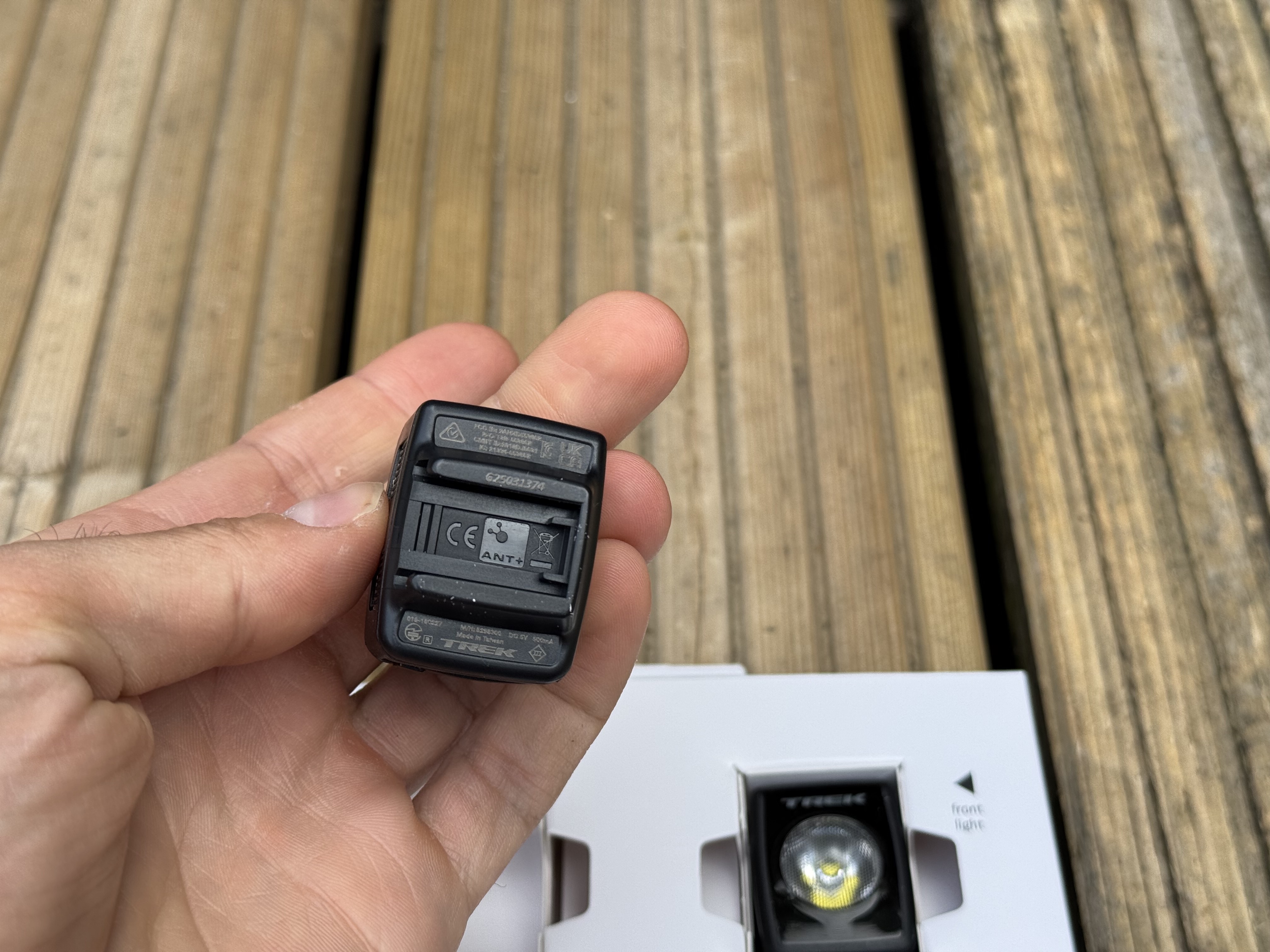You can trust Cyclingnews
Our experts spend countless hours testing cycling tech and will always share honest, unbiased advice to help you choose. Find out more about how we test.
Price: £89.99 / €104.99/ $134.99
Lumens: 200 front, 90 rear
Modes: 5 for both
Battery life: Max claimed hours 15 rear, 30 font
Weight: 45g for lights, 65g with mounts
Brought out in 2023, the Trek Ion 200 and Flare RT lights have been designed to offer enhanced visibility for riding in both nighttime and daylight conditions while coming in at a price point that sits them within the best budget bike lights on the market.
Smart CREE LEDs are used in the front light to offer 200 lumens of maximum power in a such a small package. The size of these lights in fact is probably the most impressive element of these lights given just how bright they are. For daytime riding they make you far more visible to other road users. The pair are also available at a reduced total price versus the standalone £49.99 price for each, and offer a reasonable value offering given they are substantially more powerful than cheaper alternatives. However they are close enough in price to some far more powerful front and rear light package deals which offer far more versatility even if they are larger.
That versatility is where these lights can struggle. For city commuting where streetlights make nighttime riding more practical these are fine. For dark country roads and higher speeds, the illumination is simply not powerful enough. Other niggles include the mounts being tough to fit over wider tubing such as aero seatposts and handlebars, although the Trek Blendr mounting system on Trek products can get around this. Also, Micro USB is most certainly outdated in cycling accessories nowadays with USB-C far more commonly used.
Design and specifications
Both the Ion 200 RT and Flare RT lights have a near identical body and design to each other. The only difference is one features red LEDs while the other uses white. Both attach with the same slide and click design onto the mount, while the rear attaches to vertical tubes like seat posts, the front attaches to horizontal tube shapes such as handlebars.
The mounts themselves use the same ladder rung with two clips as the Trek CarBack…
Click Here to Read the Full Original Article at CyclingNews RSS Feed…




